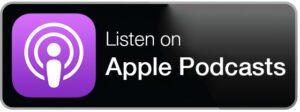How do you get yourself to follow through on tasks when you just don’t feel like? Well, that’s the problem I had, and the LinkedIn community answered the call to help me beat procrastination. Keep listening for their best advice.
Welcome to Lean Leadership for Ops Managers, the podcast for leaders in Ops Management who want to spark improvement, foster engagement, and boost problem solving – AND still get their day job done. Here’s your host, Leadership Trainer, Lean Enthusiast, and Spy Thriller Junkie, Jamie V. Parker.
Hey, Ops Managers. So we all have our favorite parts of our work. And maybe some not-so-favorite parts of our work, and possibly, just possibly, some “I want to jab a pencil in my eye” parts of our work. Well, a few weeks ago, I was really struggling to get those not-so-favorite parts done. I knew these were important tasks, things that needed to get done for me to achieve my goals. I time blocked space on my calendar for them. And when that time came up, I stared into space, and then looked for every distraction possible. I basically had the professional equivalent of a toddler temper tantrum in the toy aisle of Target. I sure did. And you know what? My normal techniques to muscle through that just really weren’t working. So I decided to crowdsource solutions, suggestions, and ideas. I posed the question to LinkedIn and got some really awesome feedback. And so that’s what I’m going to share with you today.
But first, why are we talking about this? Well, we’re in this series exploring how we as leaders spend our time and how the leaders on your team spend their time, all in the idea of getting more of the right things done and being more purposeful in spending our time developing people and doing proactive improvement. Well, we’ve talked so far in this series about investigating what’s happening today and understanding your current state. We talked about steps that can help you create more bandwidth if you feel like you’re just treading water.
And then we also talked about how to use improvement kata or another systematic thinking approach and apply it to this problem. Sometimes, though, you’ve identified an important task, and you just don’t feel like doing it. You want to do anything but. You’re ready for that temper tantrum. And if we stay stuck in procrastination and pushback, then it takes more time. We have more waiting waste, we have more excess processing, all of the things. We’re hurting our efforts. So if you ever find yourself in that space, then today’s episode is for you. I’m sharing seven different recommendations to help you follow through when you just don’t feel like it. And I encourage you to check out our show notes at processplusresults.com/podcast. If you head over to our show notes, you’re going to be able to see all the initial comments, add your own comments, connect with the folks who provided advice, and bookmark it so that you can keep coming back next time you need it. So again, to find those show notes, you go to processplusresults.com/podcast. This is episode 28.
All right. The first recommendation, which was quite popular, is from my friend Brian Buck, who puts it as “Do the worst first.” Brian says when he finds himself in this space, he begins with the tasks he hates so that he’s rewarded with work he enjoys afterwards. He says sometimes if he starts with the work that is most rewarding first and most fun first and saves the not-so-fun work for later in the afternoon, then as more time goes by, the level of his dread raises. The longer the time goes by without him doing it, his resistance to doing it becomes greater. So his dread level might have been a seven when he woke up in the morning, but by the afternoon it’s up to a 12, making it that much harder. This idea of “Do the worst first” can also be found in Brian Tracy’s book, Eat That Frog!, which Jaclyn Harder recommends as a great book on the topic because, in that book, you’re going to read Brian Tracy talk about eating the biggest, baddest, ugliest frog first.
Dana Patterson agreed with this approach, with her spin being, “Eat your vegetables first, and do your least favorite tasks first.” And Jesse DePreist reminds us that our best work is done when our brain is fresh and rested, which is probably in your morning hours. If that’s a task that not only do you not enjoy doing but you need to have some brainpower for it, eating that frog first might just be what’s on the docket.
The second recommendation was using the Pomodoro Technique or sprints or intervals, kind of all in this same idea of taking an interval or sprint or Pomodoro approach. Now, Pomodoro is a time management system that encourages people to work with the time they have. Here’s how my friend Ron Pereira described it. He said, “Focus on one thing, and one thing only for 25 minutes, then take a five-minute break. After that, back for another 25-minute work sprint, and then a five-minute break.” If during one of your 25-minute work sprints, you get that one task done, then you move to the next task. The key being that you work only on that one thing. And Ron suggested the tomato timer as a fun web-based timer to help you do this.
Now, Susan Bernstein and Stephanie Schwab chimed in and they also use the Pomodoro Technique with the help of apps. And Jesse DePriest uses a spin-off of this technique, kind of his combination between kata routines and personal kanban, where he establishes working sprints that range from 30 to 50 minutes. Then after that, he takes a 10 to 15-minute break with this one key. And that is to include something physical – take a walk or get up and move around, walk up and down the steps. Something that gets you physically moving before you come back to your next work sprint.
Ready? Third recommendation. I love this advice from Hollie Jensen, who basically said that she likes to try and make work easier and better. Because what she said is she said, “Try to make that task more appealing, or easier to do. Maybe by doing a little bit every day, or maybe having a partner help you. Or maybe you can find YouTube videos on how to do it easier. Something that helps you make it easier and better.”
Chandra DeSimone likes to put on some good background music and grab her favorite fidget toy. That’s her way of making that work just a little bit easier and better.
Now, Stephanie Schwab combines the Pomodoro 25-minute technique with focus music, so that she can make that work sprint better for her. And she uses an app called Focus@Will. Be sure to check out those show notes. I’ll link to all of these app recommendations.
And of course, in making our work easier and better, Jesse DePriest reminds us to turn off distractions, all those other channels. And Ron Pereira seconds this saying, “Be sure to limit that social media to 30 minutes a day.”
“You know, so often in Lean, we’re trying to make work easier and better on a broad scale. And we’re essentially saying, “Let’s take that idea and apply it to this targeted challenge here.”
Brian Buck kind of took this to the next level. He said, “If the task is something that you don’t like doing, and it’s something that needs to be done frequently, it’s a recurring task, then see if you can find someone who actually enjoys doing that task. Because we’re all different and your pain might actually bring someone else joy.”
Talk about making work easier and better. Next up, is to use rewards. So Stephanie Hill, who is a friend of mine, who has also been a guest on this podcast, has begun a practice for the big things that are lingering on her to-do board. So it’s something that she’s got her to-do kanban and this has kind of been lingering there. And so the practice she’s now doing is each week, she writes out a statement and she lists the goals this week and then a “due by” – when are they due by – and then the reward. And her rewards have been things like swimming or getting a massage or seeing a movie or having a fun outing with her son, or maybe having some fun with some Legos one weekend day.
Now, Hollie Jensen combines the Pomodoro approach with rewards. So sometimes she says she gives herself a healthy reward. So for her, it might look like this – focus for 20 minutes, then shop for five minutes on Nordstrom, and then focus again and repeat. She got a few likes on that one.
Now, Chandra DeSimone goes for the dopamine hit as a reward. She really tries to build momentum by making the list of the small steps and then physically checking them off so she can get a little bit of satisfaction each time and build that momentum. So one technique you might want to look at is how can you use rewards.
Now, another recommendation that I read about was to break it down into smaller chunks. Bella Engelbach suggested breaking the work down into these tiny chunks so that they seem more achievable. And Jaclyn Harder seconded at that. She said some things just seem too big, which can lead to avoidance. And so that’s a technique that she uses. This idea of breaking things down into smaller chunks was echoed by Susan Bernstein and Stephanie Schwab also. So that might mean you want to try it out.
All right, last two up. These are interesting because they might almost seem like opposites. Let’s go through them. So first is to give yourself grace and space to work in alignment. So Ron Pereira talked about refocusing on your why and remind yourself how the task is connected to your purpose and goals. So that now, it’s not just about that task. It’s about this bigger purpose, this bigger why that it’s connected to. And there were also quite a few recommendations about giving yourself grace and space and about alignment.
Christopher Fern had a great comment. He said he trusts and looks for alignment. For him, there are often multiple things on the list that are in alignment with his goals and with his intention. And so when he really gets this resistance, sometimes he’ll ask himself this question, What’s a leverageable something else that’s also a priority? So if he’s resisting this one thing over here, there might be something else that’s also important, that also is valuable, it also is connected to his purpose. And he can shift with that question. I love that question. “What’s a leverageable something else that’s also a priority?
Now, Moe Carrick, who is one of my favorite thought leaders on human-centered leadership added her approach. She says she’ll say to herself, “You know what? This is not meant to be done right now.” And then she works on opening herself, being open to when is the right time to do that thing. And when she gives herself that space to consider that, most of the time, she actually finds herself drawn to completing the task she’s been avoiding. How about that for some really awesome Jedi mind trick, right? To be able to say, “Gosh, I’m resisting, I’m resisting, I’m resisting, but now I’m going to give myself space. I’m going to allow that and say, ‘Okay, maybe this is not meant to be done right now.’” And open yourself up and say, “Okay, when is the right time for that?” And then she’s usually drawn to it anyway. So good, so good.
All right. So Jill James also acknowledged that while she uses time blocking on her calendar, sometimes she just isn’t in the mental space to work on it in that moment. So she takes this two-pronged approach. First, she sets a hard deadline for when she will commit to completing it by, and that’s now a promise to herself. And second, in that moment, she at least takes steps to get started. So she’s got that hard deadline set, she’s giving herself some grace and space that she could choose to postpone this and do it later, as long as it’s by that hard deadline. But instead of just setting the deadline and moving on, she says, “I at least want to take a crack at it.” Now, when she at least takes that crack at it what she’s able to do is to give herself the space and also take action. And so sometimes that can lead to you going ahead and finishing up, right? “Well, I’ve already started, I might as well. I’ve already started, now my mental state has shifted.” And sometimes she can feel good that she started it and can still choose to wait until she has time later on before that final deadline.
All right. Chandra DeSimone also contributed to this idea by first acknowledging that she is human and that most humans go through an experience like this. And what this does is allows her to let go of the urge to self-blame. And when she can do that, that now allows for all those other techniques she shared to be impactful. So those are some different recommendations that I kind of categorized as this give yourself grace and space to work in alignment with purpose and priorities.
Now, on the opposite side of grace and space, there were also some suggestions around the idea of “just do it”. I said in the previous space with alignment that Ron Pereira kind of said, “Refocus on your why.” He also threw down a little bit of truth here. He said, “If refocusing on your why doesn’t get things moving, then you may want to reflect on how serious you really are about your why. Boom!
All right. A few other “just do it” recommendations. Mauricio Solano said, “Actions first, feelings later.” Dave Harry said he tells himself, “Let’s do this.” He gives a little encouragement to himself with a good old meme behind it. Patty Caballero said, “Just try to do, without the thinking about it beforehand.” And Mariah Bowen added on to this with the five-second rule she learned from Mel Robbins. And the five-second rule is when you count down from five to one, with your rule being that when you get to one, you start the activity. She adds, “Don’t give your brain the time to consider the alternative.” And back to my friend, Brian Buck, we started with Brian, we’re going to wrap it up with Brian. He said, “Training myself that when I say go, I go, even when I don’t feel like it, it’s a pure competitive advantage.” So he comes at it and says, “You know what? I am training myself to be able to go, and if I can do this, then I’m putting myself at a competitive advantage.”
All right, there you have it. Real advice from real people on how we can be more productive, even when we don’t feel like it. Let’s recap those:
Do the worst first.
Use sprints are the Pomodoro Technique.
Make it easier and better.
Add in rewards.
Break it down into smaller chunks.
Give yourself grace and space to work in alignment.
Just do it.
Now, not only will each person find different techniques helpful, but the same person will likely find different techniques helpful in different situations. So, where number six and number seven almost sounded contradictory, that’s okay. Because sometimes, I’m going to use number six, and sometimes, I’m going to use number seven.
So what’s your next step? Here’s the thing. My hope through this is that you’re going to be able to come back to these recommendations time and time again when you need them. So your next step is to bookmark the podcast page. Remember, you can find the show notes and processplusresults.com/podcast, and then go over to episode 28, that’s episode 28 at processplusresults.com/podcast. Make sure you save it in a safe place so you can come back to it.
A big thank you to all of our contributors. Brian Buck, Jaclyn Harder, Chandra DeSimone, Dana Patterson, Ron Pereira, Jesse DePriest, Susan Bernstein, Stephanie Schwab, Christopher Fern, Bella Engelbach, Hollie Jensen, Moe Carrick, Stephanie Hill, Mauricio Solano, Jill James, Dave Harry, Mariah Bowen, and Patty Caballero. You can connect with any of these folks by going to the podcast page with those show notes. I’ll make sure there’s a link so you can connect to any of them.
All right. I would love to hear which of these techniques you try and how they work for you. Off to experimenting you go. Until next time.













